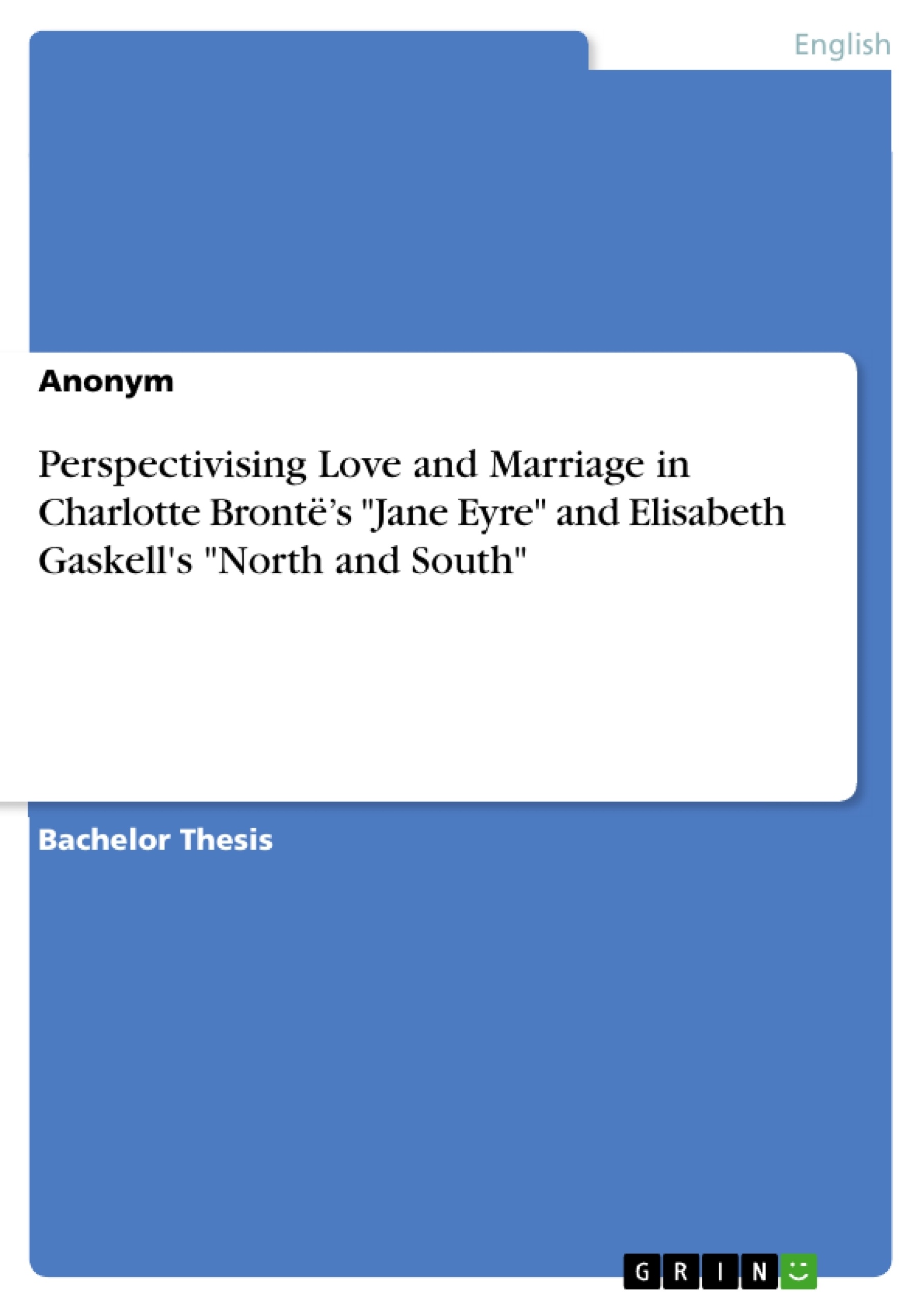The representation of love and marriage in Charlotte Brontë’s "Jane Eyre" and Elizabeth Gaskell’s "North and South" does not seem to be fundamentally different when looking at the story level, the content level of what is narrated (cf. Fabian 172), alone. The female and male characters of both novels struggle in achieving a marriage bond at first due to the class relation between the both of them, but after the heroines inherited a sum of money they return to the heroes’ aids. Of course this is just a brief summary of the novels’ plots to show the similarities both share in their plot structure. This paper, however, will look at the discourse level of both novels thus looking at the presentation level of how the story is narrated (cf. Fabian 172) in order to measure whether or not the novels by Brontë and Gaskell are as similar as a plain summary suggests.
For this purpose this paper will perspectivise love and marriage in Gaskell’s North and South and Brontë’s Jane Eyre, meaning it will analyse the narration, the focalization, the representation of speech, and the representation of thought presented in both novels. The analyses of these categories will, of course, focus on the relevant love couples of both narratives, Margaret Hale and John Thornton in "North and South" and Jane Eyre and Edward Rochester in "Jane Eyre". The first chapters will present the tools and techniques that will be used later for the analyses of both novels, presenting first the tools for the analysis of narration and focalization and after that the techniques for the representation of speech and thought. The following chapters will use these tools for the analysis of Charlotte Brontë’s "Jane Eyre", focussing initially on the narration and focalization in the novel before turning to the representation of speech and thought. The chapters after that will be concerned with Elizabeth Gaskell’s "North and South" similarly; it will at first analyse the narration and focalization prior to the analysis of the representation of speech and thought. The last chapter will recapitulate the findings of the analyses of both novels in order to evaluate if both can be said to shape the same type of love and marriage, like a brief look on the story level suggests, or if there are differences that can be observed on the discourse level.
Inhaltsverzeichnis (Table of Contents)
- Introduction
- Tools and Techniques for the Analyses
- Tools for the Analysis of Narration and Focalization
- Techniques for the Representation of Speech and Thought
- Perspectivising Love and Marriage in Jane Eyre
- Narration and Focalization in Jane Eyre
- Speech and Thought in Jane Eyre
- Perspectivising Love and Marriage in North and South
- Narration and Focalization in North and South
- Speech and Thought in North and South
- Conclusion
Zielsetzung und Themenschwerpunkte (Objectives and Key Themes)
This paper aims to analyze the presentation of love and marriage in Charlotte Brontë's Jane Eyre and Elizabeth Gaskell's North and South, focusing on the discourse level of narration rather than the mere content of the story. The study will investigate how the novels employ techniques of narration, focalization, speech, and thought representation to depict these relationships.
- Analysis of narration and focalization in both novels
- Examination of the representation of speech and thought in both novels
- Comparison of the portrayal of love and marriage in Jane Eyre and North and South
- Exploration of the impact of narrative techniques on the reader's perception of love and marriage
- Evaluation of whether the novels present similar or different perspectives on love and marriage
Zusammenfassung der Kapitel (Chapter Summaries)
The first chapters of the paper introduce the tools and techniques that will be used for the analysis of narration and focalization, as well as the techniques for the representation of speech and thought. The subsequent chapters apply these tools to analyze the portrayal of love and marriage in Jane Eyre, focusing on narration and focalization in one chapter and on speech and thought in another. This process is then repeated for North and South. The final chapter will summarize the findings of the analyses of both novels and compare their respective perspectives on love and marriage.
Schlüsselwörter (Keywords)
This paper explores the key concepts of narration, focalization, speech representation, and thought representation in the context of love and marriage in two classic English novels, Jane Eyre and North and South. The analysis will focus on how these narrative techniques shape the reader's understanding of the protagonists' relationships.
- Quote paper
- Anonym (Author), 2019, Perspectivising Love and Marriage in Charlotte Brontë’s "Jane Eyre" and Elisabeth Gaskell's "North and South", Munich, GRIN Verlag, https://www.grin.com/document/920314



